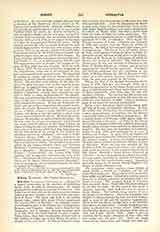

Giffard, BONAVENTURE, b. at Wolverhampton, England, 1642; d. at Hammersmith, Middlesex, March 12, 1734; second son of Andrew Giffard, of Chillington, Staffordshire. His father, who married Catherine, daughter of Sir Walter Leveson, was slain in a skirmish near his own home, during the Civil War. Owing to the religious persecutions, Bonaventure was sent, with his younger brother Andrew, to Douai to be educated. From Douai, in October, 1667, he went to Paris to pursue his theological studies, and was ordained for the secular mission. Some years later, he received the degree of Doctor of Divinity at the Sorbonne. Having attracted the attention of King James II by his piety and learning, he was appointed preacher to the court. Religion had been in sore straits in England for the previous fifty years. Dr. Smith had been appointed vicar Apostolic of the whole country in 1625, but such was the persecution that he was forced to withdraw to France in 1631, where he remained till his death (1655). For nearly thirty years more his place in England remained unfilled; finally, in 1685, Dr. Leyburn was appointed to succeed him. Pope Innocent XI now entered into negotiations with James II; and, as a result, four vicariates were formed, Dr. Giffard being put in charge of the Midlands. He was consecrated bishop, at Whitehall, by the nuncio, on April 22, 1688. In religious matters James II displayed too little prudence, and by his high-handed actions gave great offense to the Protestants. Not only did he compel the authorities of Magdalen College, Oxford, to accept Bishop Parker as their president; but, on Parker’s death (1688), he had twelve Catholic fellows appointed, and made Dr. Giffard president, despite the fact that the college electors had selected a Protestant, John Hough. The king’s nominee took up his residence there on June 15, 1688. A storm of opposition arose, and he was ejected about five months later. The Revolution followed, and the bishop was seized and imprisoned at New-gate, where he remained nearly two years. He was released on bail, in 1690, and for more than twenty-four years led a perilous life, being frequently compelled to hide from the pursuivants. When Dr. Leyburn died, in 1703, Bishop Giffard was charged to look after his district, and from 1708 till 1713 he had to govern the Western vicariate as well. In this he was aided by his brother Andrew, his vicar-general, till the latter died, September 14, 1714. Henry Howard was nominated as coadjutor to Dr. Giffard in 1720; but, as he died before his consecraztion, Benjamin Petre was appointed. The old bishop passed away fourteen years later, in 1734, at the age of ninety-two. He was buried beside his brother Andrew, in the churchyard of St. Pancras. A few of his sermons have been preserved, and many of his interesting letters were printed in the “Catholic Miscellany”, in 1826 and 1827.

